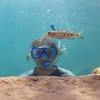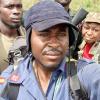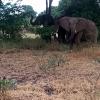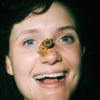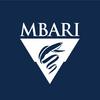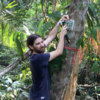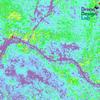Acoustic sensors enable efficient and non-invasive monitoring of a wide range of species, including many that are difficult to monitor in other ways. Although they were initially limited in application scope largely due to cost and hardware constraints, the development of low-cost, open-source models like the Audiomoth in recent years has increased access immensely and opened up new avenues of research. For example, some teams are using them to identify illicit human activities through the detection of associated sounds, like gunshots, vehicles, or chainsaws (e.g. OpenEars).
With this relatively novel dimension of wildlife monitoring rapidly advancing in both marine and terrestrial systems, it is crucial that we identify and share information about the utility and constraints of these sensors to inform efforts. A recent study identified advancements in hardware and machine learning applications, as well as early development of acoustic biodiversity indicators, as factors facilitating progress in the field. In terms of limitations, the authors highlight insufficient reference sound libraries, a lack of open-source audio processing tools, and a need for standardization of survey and analysis protocols. They also stress the importance of collaboration in moving forward, which is precisely what this group will aim to facilitate.
If you're new to acoustic monitoring and want to get up to speed on the basics, check out these beginner's resources and conversations from across the WILDLABS platform:
Three Resources for Beginners:
- Listening to Nature: The Emerging Field of Bioacoustics, Adam Welz
- Ecoacoustics and Biodiversity Monitoring, RSEC Journal
- Monitoring Ecosystems through Sound: The Present and Future of Passive Acoustics, Ella Browning and Rory Gibb
Three Forum Threads for Beginners:
- AudioMoth user guide | Tessa Rhinehart
- Audiomoth and Natterjack Monitoring (UK) | Stuart Newson
- Help with analysing bat recordings from Audiomoth | Carlos Abrahams
Three Tutorials for Beginners:
- "How do I perform automated recordings of bird assemblages?" | Carlos Abrahams, Tech Tutors
- "How do I scale up acoustic surveys with Audiomoths and automated processing?" | Tessa Rhinehart, Tech Tutors
- Acoustic Monitoring | David Watson, Ruby Lee, Andy Hill, and Dimitri Ponirakis, Virtual Meetups
Want to know more about acoustic monitoring and learn from experts in the WILDLABS community? Jump into the discussion in our Acoustic Monitoring group!
Header image: Carly Batist
No showcases have been added to this group yet.
Fauna & Flora
- 0 Resources
- 0 Discussions
- 3 Groups
Ph.D Speech-Hearing Sciences; 3D Designer/Printer interested in building/testing/deploying standardized environmental recording platforms for scientists and engineers in developing countries.
- 0 Resources
- 0 Discussions
- 10 Groups

- 0 Resources
- 9 Discussions
- 3 Groups

- 0 Resources
- 2 Discussions
- 3 Groups
- @Alino
- | Alain
I am a zoologist and I am interested in biodiversity and the conservation of insects and mammals
- 0 Resources
- 0 Discussions
- 3 Groups
- @thomasmutonhori
- | TM
Ecologist
- 0 Resources
- 0 Discussions
- 4 Groups
San Diego Zoo Wildlife Alliance
Lead, San Diego Zoo Conservation Technology Lab
- 0 Resources
- 0 Discussions
- 2 Groups
- @Becky_Heath
- | She/ Her
University of Cambridge & Imperial College London
Interdisciplinary scientist working in field data collection methods and tropical agriculture

- 0 Resources
- 9 Discussions
- 7 Groups
I am a Senior researcher and PI in Conservation and Animal Ecology at Fondazione Edmund Mach, Trento, Italy. I am coordinator of EUROMAMMALS, member of the advisory board of the Global Initiative on Ungulate Migration at CMS, and President of the International Bio-Logging Society
- 0 Resources
- 0 Discussions
- 5 Groups
- 0 Resources
- 0 Discussions
- 7 Groups
I am biologist, I have studied wild life and ethnobiology at Amazon and caimans in Brazil
- 0 Resources
- 0 Discussions
- 10 Groups
Wildlife Acoustics
- 0 Resources
- 1 Discussions
- 1 Groups
This article provides a review of deep learning (predominantly ML) used in marine ecology and considerations for its future directions in conservation. In plain language, the authors provide a methodology for training...
20 December 2021
The Monterey Bay Aquarium Research Institute has an extensive acoustic archive from underwater recordings and has made their valuable dataset available to researchers around the world via an open data registry on the...
5 November 2021
GroupGets has a Group buy campaign for a μMoth v1.1(Round 2), that runs till Sat, 06 Nov 2021 12:55:00 PDT. The μMoth v1.1 goes for a Single-unit price of $99.99 + shipping.To join this buy, kindly visit this page
4 November 2021
This article outlines how acoustic monitoring of bird species provides a means to study ecosystems with minimal disturbance and over wide areas. Birds are excellent indicator species, therefore, monitoring their trend...
21 October 2021
In David Savage's Technical Difficulties case study, he discusses lessons learned from working with bioacoustic tools in the field and dealing with damages caused by environmental factors and wildlife. Download this...
12 October 2021
Article
The new μMoth is now available on GroupGets! These units are going quickly, so join the order quickly to be among the first to try the world's smallest full-spectrum acoustic development board! Join the GroupGets order...
27 May 2021
ZSL's Remote Sensing in Ecology and Conservation journal has released new research for early view before inclusion in an issue. See the full list of recent open access research papers on RSEC.
22 April 2021
The University of Melbourne and Open Acoustic Devices are conducting an online survey to understand the future needs of open-source acoustic monitoring technology applied to the study of biodiversity. The results of...
9 April 2021
Community Announcement
Whether you spent the last year working in the field, lab, at home, or virtually, the WILDLABS community's conservation tech achievements were on full display in our annual #Tech4Wildlife Photo Challenge! Relive our...
25 March 2021
National Geographic is offering funding up to up to $50,000 for conservationists conducting research on how the pandemic has impacted wildlife and conservation work. If you are interested in researching aspects of the...
10 March 2021
WILDLABS community members are invited to submit an Expression of Interest to Fisheries Innovation Scotland (FIS) to participate in two research projects involving conservation tech's role in the future of sustainable...
8 December 2020
Hey Acoustic Monitoring and AI for Conservation community members - don't miss Rainforest Connection's Species Auto Detection Kaggle competition, open for to competitors and teams now! Participants will have the chance...
24 November 2020
August 2025
event
September 2025
event
October 2025
November 2025
event
January 2023
event
November 2022
event
event
event
64 Products
Recently updated products
| Description | Activity | Replies | Groups | Updated |
|---|---|---|---|---|
| These would be infrasound, so no the sealed volume doesn't need to be buried. It only needs to be a few cc total volume for a single element. I found an old poster... |
+12
|
Acoustics | 10 months ago | |
| Thanks, we know they are breeding these animals here, I asked, since it's seems to be an expensive hobby, we need to allocate more funding for rural women in entrepreneurship and... |
|
Acoustics, Animal Movement, Citizen Science, Human-Wildlife Coexistence, Protected Area Management Tools, Wildlife Crime | 10 months ago | |
| WildMon, Terra Genesis, The VF Foundation, Thaksin University, and the Wanakaset Symbiosis Network have teamed up on a new project in... |
|
Acoustics, AI for Conservation, Community Base | 10 months 1 week ago | |
| This looks awesome! |
|
Acoustics | 10 months 1 week ago | |
| I would love to see my bat detector designs in use in Africa - drop me a line, let's see if we can get something to happen - I'm pipistrelledetector at gmail dot comhttp://www.... |
|
Citizen Science, Acoustics, Conservation Tech Training and Education, Human-Wildlife Coexistence | 10 months 2 weeks ago | |
| Hi Phil, Thanks for sharing - this is really interesting work! Seems like a cool integration of ground-based (or ocean-based) data and satellite data, with a community... |
|
Geospatial, Acoustics, Camera Traps, eDNA & Genomics | 10 months 3 weeks ago | |
| Or you could use my sbts-aru project. Which is free software that runs on Raspberry Pis. It also allows you to perform sound localization remotely if required, without bringing... |
|
Acoustics | 10 months 3 weeks ago | |
| Yes, predation is a significant conservation issue, especially for vulnerable species. Invasive predators can harm native wildlife, and carnivores preying on livestock often lead... |
|
Acoustics | 10 months 3 weeks ago | |
| I shared some information on different ARU options in this post which might help! |
|
Acoustics | 11 months ago | |
| Thanks for the plug, @Rob_Appleby Yes, we do a lot of work with audio playback as a nonlethal deterrent. We generally don’t do any work on identifying the animal... |
|
Acoustics | 11 months 1 week ago | |
| Hi Sean! I was the one who annotated these recordings and this is definitely a mistake- that song is a Hauxwell's Thrush; it's annotated correctly with 15622 but not with... |
|
Acoustics | 11 months 2 weeks ago | |
| @calyptura Try using another version of the download scripts that you can download from this link. There are 2 version of the script available. |
|
Acoustics | 11 months 2 weeks ago |


